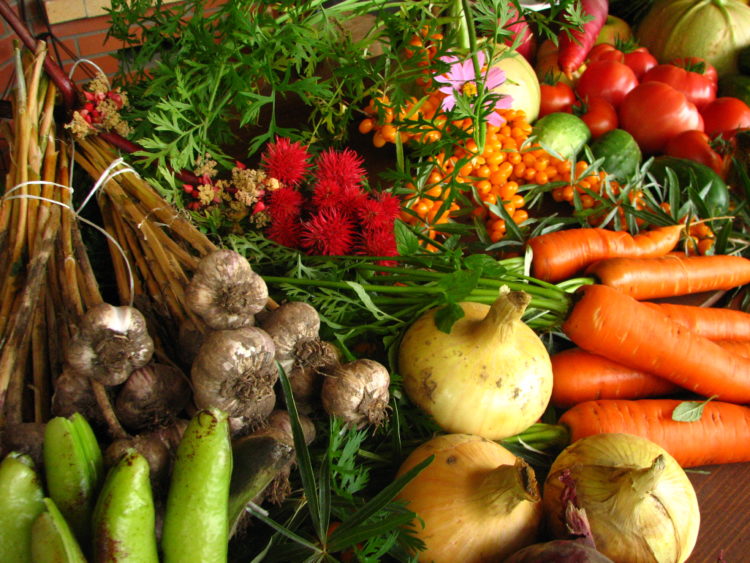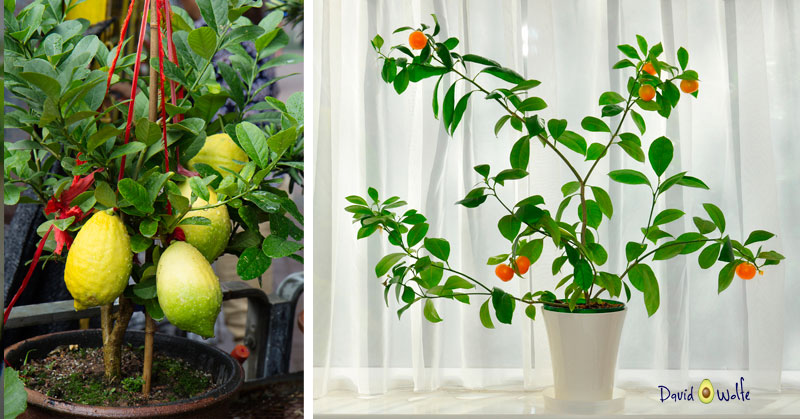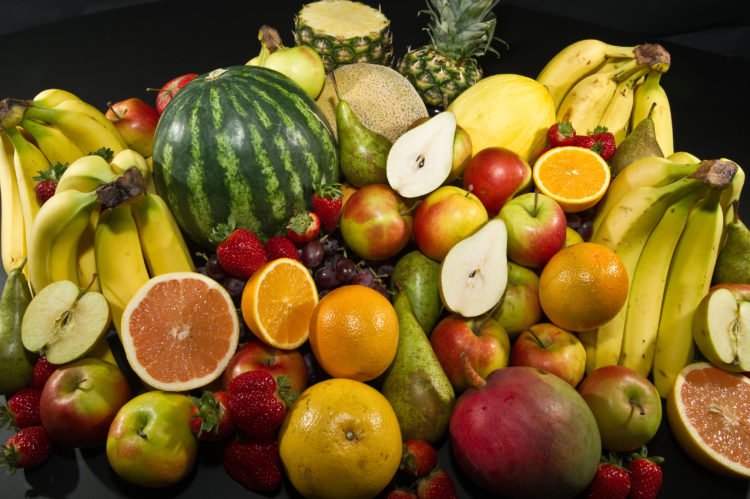Gardening is fun! And with a bit of guidance – and a bit of space – just about anyone can do it. We aren’t talking about an ivy plant here. These are 18 garden-variety plants you can grow at home in containers.
With well over 5 million apartments built in the U.S. between 1990 and 2014 alone, it’s fair to say there are a good number of you out there with the space to grow a healthy garden.
Add to that the number of people who have the space but are unable to plant in their yards for whatever reason, and you’ve got a good chunk of the population missing out on all the gardening perks.
The benefits of connecting with Nature in whatever space you have are many!
So here’s some good news: You can grow a staggering amount of produce in containers under your very own roof. Here’s a handy list with some resources, too. (1)
Getting started with plants you can grow at home in containers
Fruits
Apples
Yes, even the right kind of apple tree can be grown in a container. But don’t just pick your favorite apple variety, and put a tree in a pot. No, there is more to it than that. Some apple trees have been developed for container planting. (2)
No bees in your house? Pollination can get tricky, especially with just one tree. Look for self-pollinating varieties. Then with the right soil, light, and water, you can wait for that Fall harvest. So it’s about getting the setup right, then nurturing the tree to literally reap the fruits of your labor.
Blueberry Shrubs
Here are instructions from eHow on growing blackberries in pots: (3)
Step 1
Select a container for your blackberry shrub that holds 15 to 20 gallons. It should be at least 18 to 24 inches wide and 12 to 16 inches deep. If your container is deeper than 16 inches, use a trowel or shovel to add wood chips to the bottom to reduce the depth.
Step 2
Fill your pot to within 6 inches of the top with 1 part peat moss to 1 part potting soil. Add several inches of organic, weed-free compost and blend well. Remove half of the soil with the trowel or shovel and set it aside for planting time.
Step 3
Choose a blackberry cultivar or variety with an erect growth habit for your container, rather than one that trails. Erect blackberry species have thick, stiff canes that can usually support themselves without a trellis. It’s also important to pick a cultivar that’s guaranteed to be free of viruses, preferably a thornless variety, such as ‘Black Satin’ (Rubus subgenus Rubus Watson “Black Satin”, USDA zones 5 through 8) or “Chester” (Rubus fruticosus ‘Chester’, USDA zones 5 through 9), These tend to be less vigorous and thus less likely to rapidly outgrow their containers.
Step 4
Remove the shrub from its nursery container by squeezing on the sides gently. A container-grown plant can be planted at any time of the year, although early spring is best. Set the plant on top of the soil in its pot; then use the trowel or shovel to fill in around the plant with the soil you set aside. The plant should end up at the same depth at which it was planted in its nursery container. Add water slowly until it drips from the drain holes in the bottom of the container. Plant only one shrub per container.
Step 5
Starting the second year, prune your container-grown blackberry shrubs early in the growing season in the same way you would if they were planted in the ground. First,sterilize the blades of the pruner by soaking them in a mix of 1 part water to 1 part rubbing alcohol; allow the blades to air-dry. Trim out any damaged canes or canes that rub against others. Then trim back second-year canes to between 40 and 42 inches and lateral branches to about 12 to 18 inches. Prune the shrubs again in winter to remove dead canes that produced fruit the prior summer. Dispose of all clippings.
Cherries
This guide from Backyard Food Growing tells you how to grow cherry trees in a container.
Lemon
Check out this video for information on growing lemons indoors:
Limes
Just as you can grow apples and lemons indoors, you can also grow limes! This video shows an easy way to learn to grow limes indoors, as is this guide from Indoor Citrus Trees.
Pineapple
Yes, you can grow pineapples, too! Check out the video below for information on growing pineapple indoors.
I also recommend taking a look at this extensive guide from Rick’s Woodshop Creations.
Strawberries
You can grow strawberries in a pot using this guide from Gardening Know How:
When considering how to grow strawberries inside, one must consider space issues and variety of strawberry houseplants one wishes to cultivate.
Space-saving ideas such as strawberry pots or growing strawberries in containers which hang from the ceiling are great options. Whole areas of a home or just a windowsill may also be dedicated to growing strawberries indoors, but be sure not to overcrowd the plants lest they become susceptible to disease or mold issues.
The key ingredient to growing strawberry houseplants, of course, is sun exposure. Whether indoors or out, strawberries need at least six hours of sun per day, which can be provided by window-facing sun exposure or by using indoor plant lighting.
Cantaloupe
It’s not just the small fruits, either. You can grow a cantaloupe in a container using this video:
Watermelon
Is it possible to grow watermelon in containers? See this video for how you can grow watermelon indoors:
Still have reservations about growing watermelon indoors? Well, I don’t blame you. Check out this new watermelon variety designed for the patio grower, and enjoy your potted plant outside. It’s called “Sugar Pot Watermelon.” What could be better? Keeping your watermelon in a sunny spot yet well-watered, you should enjoy this delicious fruit in later summer. (6)

Greens
Basil
Basil can be grown indoors and kept around the kitchen – where it’s most handy – using this video:
Oregano
Oregano, a member of the mint family, is both hardy and invasive. Growing oregano in containers is really a sensible strategy anyway. Whether keeping them indoors or on the deck, this plant likes moist, well-drained soil. Trim back each spring, and you’ll have a perennial herb for years. Also, you can grow this herb in the kitchen, and snip off what you need for dinner each night. can be grown indoors using a plant light. (7)
This guide from GoGardening Know How does a good job of providing information:
Indoor oregano plants need similar conditions to exterior raised plants. The ideal temperatures for growing oregano inside are between 65 -70 F. (18-21 C.) in the day and 55-60 F. (13-16 C.) degrees at night.
Parsley
This video is great for growing parsley indoors:
Gardening Know How also has a pretty good guide on the topic of parsley:
Parsley herbs (Petroselinum crispum) grow best in a sunny, preferably south-facing window where they will receive six to eight hours of direct sunlight every day. If your window doesn’t provide that much light, you will have to supplement it with fluorescent lighting. Turn the pot every three or four days so that the plant doesn’t lean into the sun.
Parsley container gardening is no different than growing any other potted herbs. Choose a container that fits snuggly on the window sill. It should have several drainage holes and a saucer underneath to catch water as it drains through. Fill the pot with a good quality potting soil and add a handful of clean sand to improve the drainage.
Humidity isn’t usually a problem when you grow parsley in the kitchen where steam from cooking and the constant use of water helps keep the air moist. In other locations, you may need to mist the plants from time to time. If the leaves look dry and brittle, set the plant on top of a tray of pebbles and add water to the tray, leaving the tops of the pebbles exposed. As the water evaporates, it increases the humidity of the air around the plant.
Rosemary
Rosemary can also be grown anywhere there’s sufficient warmth, as this guide from Fine Gardening shares:
Growing rosemary from seed typically results in low germination and excessive plant variation. With cuttings, the plants are always identical to the stock plant. Rosemary is easy to propagate, and sometimes roots will develop even in a glass of water on a sunny windowsill. I have found that the best time of year to take cuttings is in the late fall and early winter.
To take cuttings, clip 2-1/2-inch stems from new growth on an established plant (see Propagating rosemary). Snip off the bottom leaves (rather than pulling them off) and dip the bottom 1/4 inch into a hormone rooting powder. Place the cuttings in a container with equal amounts of peat moss and perlite. Spray the cuttings with a light mist on sunny days.
Chives
Chives can also be grown in a south-facing window, as stated by Gardening Know How:
A sunny south window offers the six to eight hours of full sunlight needed when growing chives inside. Rotate pots if chives are reaching toward the light.
If a sunny window is not an option, chives growing indoors can get the necessary light from a fluorescent fixture six to twelve inches above the pot. Two 40-watt bulbs work best when growing chives inside.
Chives growing indoors appreciate other growing pots close by to provide humidity as well as a fan for air circulation. Humidity for indoor chives may also be provided by nearby pebble trays filled with water or miniature water features nearby. Misting with a water bottle can also help prevent low humidity.
Catnip
Who says you’re the only one who can benefit from indoor gardening? You can keep your feline friends happy by growing catnip indoors with this handy video:
Thyme
This video from The Rusted Garden will help you grow thyme in your home… in no time!
Sage
Sage has one of the longest culinary histories of any herb. This guide from The Kitchn shows you how to grow sage in your very own home. (9)
Where: Sage will grow almost anywhere, but it prefers to be in full sun, which will enhance its flavor. (You may also think about using Epsom salt to enhance plant health.) the tastiest leaf when it receives a lot of sunlight. This evergreen shrub is hardy from zone four through 11, and because of its affinity for well-drained garden soil, it performs well in containers. Keeping sage on the kitchen windowsill keeps it handy for culinary use, but you can also use sprigs of sage in flower arrangements.
When: Sage can prove challenging when planted by seed, but it is very easy to grow from cuttings or by “layering.” I purchased my first sage plants from the garden center, and now I propagate new plants via one of the two methods listed below. Regardless of which propagation method you choose, plant young sage plants only after the ground temperature hits 65°F, one to two weeks before the last frost.
Who said you can’t grow a garden if you’re short on space? And if you do have a backyard, learn a trick or two from the Urban Homestead Family!
[h/t www.wakeup-world.com]



